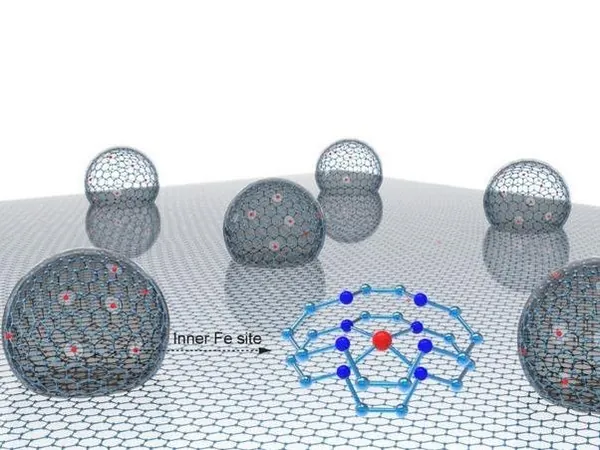
Game-Changer: Chinese Scientists Unveil Revolutionary Iron Catalyst for Fuel Cells
2025-08-28
Author: Wei Ling
A Breakthrough in Fuel Cell Technology!
In an impressive scientific breakthrough, a team of Chinese researchers has engineered a high-performance iron-based catalyst that could drastically reduce our dependence on costly platinum for fuel cells. This innovative creation, known as the "inner activation, outer protection" design, promises exceptional efficiency and longevity.
Overcoming Traditional Limitations
Traditional iron/nitrogen/carbon (Fe/N-C) catalysts often suffer from slow reaction times and the unfortunate tendency to lose their effectiveness due to strong interactions with oxygen intermediates. Such limitations have stymied the potential of Proton Exchange Membrane Fuel Cells (PEMFCs), which are crucial for clean energy technologies.
The Ingenious Solution: CS Fe/N-C Catalyst
Guided by prominent researchers like Prof. Wang Dan of Shenzhen University and Prof. Zhang Suojiang from the Chinese Academy of Sciences, the team introduced an extraordinary inner curved-surface single-atom iron catalyst, termed the Curved-Surface (CS) Fe/N-C. This catalyst features a nanoconfined hollow multishelled structure that houses iron atoms densely within its inner layers, enhancing catalytic performance significantly.
How It Works: A Unique Microenvironment
Each nano particle in this innovative catalyst, measuring only 10 nm x 4 nm, boasts layers where iron atoms are strategically concentrated. The outer graphitized carbon layer not only weakens the binding of reactive oxygen species but also minimizes the production of harmful hydroxyl radicals, leading to an optimized environment for catalytic reactions.
Results That Speak Volumes
Astoundingly, the new catalyst achieved an oxygen reduction overpotential as low as 0.34 V, surpassing the performance of traditional planar structures. It also maintained a remarkable power density of 0.75 W/cm² under standard conditions, showcasing 86% activity retention even after over 300 hours of continuous operation.
Paving the Way for the Future of Clean Energy
This groundbreaking research redefines the field of catalysis for fuel cells, establishing a new paradigm that could lead to more efficient and durable options. By effectively diminishing the binding strength of oxygenated intermediates, the CS Fe/N-C catalyst not only enhances activity but also significantly improves stability.
With these advancements, the future of clean energy technology looks brighter than ever, propelling us towards a world where performance no longer hinges on precious metals.



 Brasil (PT)
Brasil (PT)
 Canada (EN)
Canada (EN)
 Chile (ES)
Chile (ES)
 Česko (CS)
Česko (CS)
 대한민국 (KO)
대한민국 (KO)
 España (ES)
España (ES)
 France (FR)
France (FR)
 Hong Kong (EN)
Hong Kong (EN)
 Italia (IT)
Italia (IT)
 日本 (JA)
日本 (JA)
 Magyarország (HU)
Magyarország (HU)
 Norge (NO)
Norge (NO)
 Polska (PL)
Polska (PL)
 Schweiz (DE)
Schweiz (DE)
 Singapore (EN)
Singapore (EN)
 Sverige (SV)
Sverige (SV)
 Suomi (FI)
Suomi (FI)
 Türkiye (TR)
Türkiye (TR)
 الإمارات العربية المتحدة (AR)
الإمارات العربية المتحدة (AR)